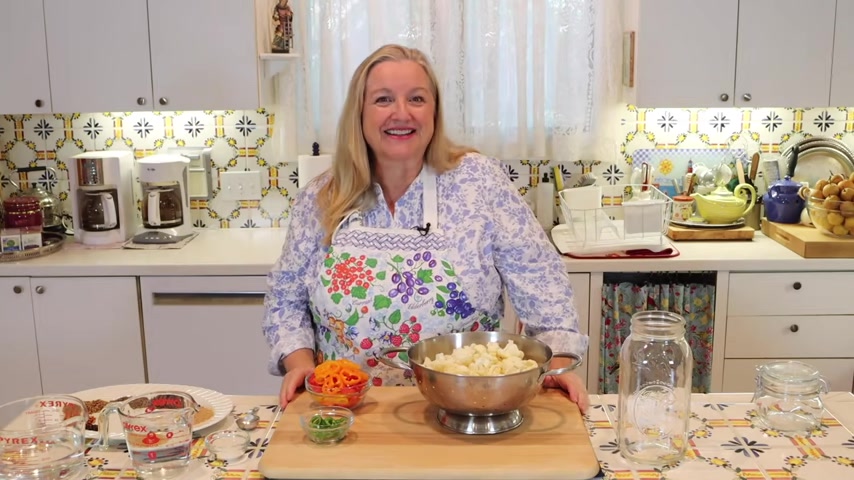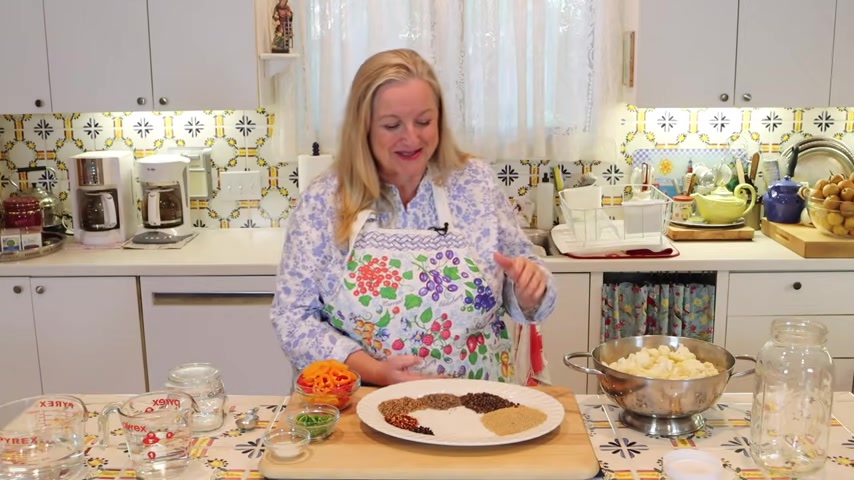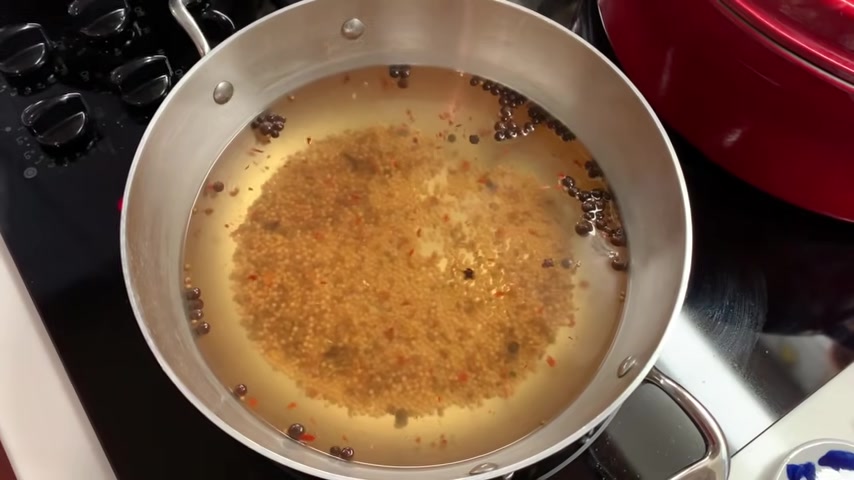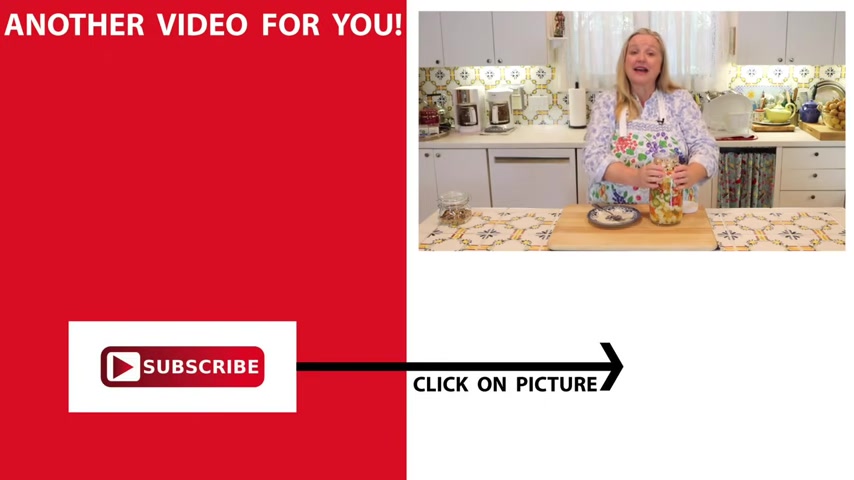https://www.youtube.com/watch?v=cX_7xjTe4l8
NO SUGAR Quick Pickles Master Recipe for Pickling any Vegetable

So I always remember that we all , uh , we all have our own ways of doing things and recipes and we remember how our grandparents and our mom has done it and everything and it's just all good thing .
There's , there's never anything wrong so about it .
So never think that you're doing something wrong .
You're just doing it your way and the way you like it .
But , uh , so many different pickle recipes .
I know my mother-in-law used to make a lime pickle and I know a lot of people like them lime pickles and I just never did , I never did like them , but I know a lot of people do .
They're one of them old fashioned recipes that people would , uh , would do because they kept for a long , long time .
But anyways , we're gonna let this cool off just a little bit more than we'll pour it in our jar .

Now , what I've got here is one head of cauliflower that I've broken up into little florets , bite size pieces and that I've washed and then over here I've got a couple of sweet red bell and yellow bell and orange bell peppers .
Uh They were the mini ones and I'd say , you know , maybe it's about a cup and a half , two cups .
This is not an exact science and you're going to be able to mix and match whatever vegetables that you want .
And then here I've got just one jalapeno that I sliced , but I also seeded it and removed most of the membrane .
Uh because that's where a lot of the spice is .
And I didn't want this to be too spicy .
But if you like things nice and spicy , you can definitely leave in the membranes and the seeds .
Now , I think for the amount of vegetables I have here , I'm gonna need a half gallon jar .
So that's what I'm gonna use .
Uh But you could certainly use two quart size jars or four pint size jars , whatever you have .

Now , for the brine , what you're going to need is two cups of water and two cups of vinegar .
And I'm just using a plain white vinegar .
I find that works very well .
But you can certainly use apple cider vinegar or another type of vinegar that you may like .
If you use apple cider vinegar , I recommend against using raw only because we're gonna be heating this brine and you don't want to in your nice raw apple cider vinegar .
So you don't have to uh search around for raw vinegar with the mother and all of that .
Uh You can just use plain uh pasteurized apple cider vinegar if you want .
But I find that the white vinegar works very well uh with , uh , the brine , uh , with the uh seasoning mix that we're gonna be using .
But I do want to mention that when you pour in your brine , if you wanna let it cool a little bit and then top off with maybe about a quarter or a half a cup of raw apple cider vinegar .

So pretty , still a little bit warm , but it's not scald and hot like it was , let me start it up again .
I think I can take this and pour it right in here .
Maybe , maybe we're not making a mess .
Hopefully .
Now you can tell that it's not covered it .
But , um , the pickles will eventually settle down in there .
I'm just gonna kind of push them down and if you got some kind of weight you wanna put down there , you can , I'm not really worried about it .
They're gonna be in the refrigerator , they're gonna start settling down .

And every once in a while I'll go in there and , uh , I'll take the lid off a taste of them and see where they're at and kind of push them down in that brine .
So after putting that brine in there and pushing them down , it , it doesn't fill the whole jar up , but that's ok .
It smells , smells like bread and butter pickles .
And it's so funny .
I can smell that mustard seed and of course , it smells like mustard .
So , but then again , that sugar and brown sugar in there and all that just , it marries together and it's what makes bread and butter pickles taste so good .

So , like I said , if you want to put a weight or something in there , you can , but they , it will settle down and you just put some kind of lid on there and uh , oh , I'm gonna let this cool down just a little bit more before I stick it in the fridge though .
I mean , it's not hot but it's still a little bit warm and I'm gonna stick it in the refrigerator and I'm just gonna leave it there and it's gonna ferment and it's gonna just be good .
Um , you can start eating these in about a week .
I probably won't wait that long .
I'll be going in and out of them , tasting of them and you can take them and kind of shake them up .
Switch them around .
But , uh , anyway , it works and it really , it's gonna be a pretty jar , a refrigerated refrigerator , bread and butter pickles .
Very easy .
Very good .
And , uh , you don't have to worry about all the canning process , but just make sure you always keep them in the refrigerator until you get them made up .

And I'll tell you something else that I do when I have something like this in a big jar , refrigerator , say I get a few c cucumbers and uh , you know , I'm not ready to eat them right then I don't want them to ruin .
So I will clean them good , clean them up , chop them up and I'll stick them right in here .
So it's a good thing to do .
So anyways , I hope y'all like this recipe and if y'all want to make some bread and butter pickles , y'all gonna really like this recipe .
And uh you can also do dill pickles this way .
You can just do them in the refrigerator .
No cannon process involved .
But uh I'll put a link below .
Um , because I , I did make some uh tomato pickled tomatoes , green tomatoes and I pickled okra and I just use the same brine for all of it because we really love pickled okra and okra is so good for you .

Uh And another thing that you can also do is say you don't particularly like the flavor of bay or you wanna leave the , the bay out .
I know bay leaves can sometimes be a little pricey .
Uh You can use a tea bag , you can just put it in the bottom of the jar before you start putting in your cucumbers , you sliced or whatever way , spears , whatever way you're gonna pickle them and that will help keep them crisp .
Just like bay leaves will help them stay crisp .
And another option is just topping the jar with a grape leaf and that will also help keep them crisp .
And the reason is they contain tannins .
Bay leaves contain tannins .
Uh tea leaves contain tannins , soda grape leaves and the tannins help keep the pickled vegetable crisp .
In the , in the case of pickles , the real pickles keeps the cucumbers crisp .
So that's something to keep in mind .
And I have a link to that video .

But uh anyways , I also have , last year I made pickled squash .
I still have some of that and I've got a , a video for that and I'll put that down in the description box too .
So anyway , y'all try this recipe .
I really think if you like bread and butter pickles , you'll really like this recipe .
It's easy and it's so good .
So guys , I hope y'all garden is coming off good .
I see pictures on uh Facebook and , and on youtube and different things .
It looks like people's gardens are really doing good this year and I'm so glad ours is doing good .
Um , we're gonna have a lot put up for the winter time and that's just always a big blessing .
So y'all take care , y'all know we love you and you know , God loves you .
So y'all come back and see us here .
We'll be back in a couple of days and like I always say , we'll be doing something because we're always doing something around here by everybody .

Uh , you can just use a clean hand , your clean fist as you're , uh , uh , filling it and just try to get that , the vegetables in the jar as tight as possible .
Now , we're gonna make our brine , which we're gonna warm on the stove .
So we're just gonna go ahead and add in our two cups of vinegar and then we'll add in our two cups of water and then to this liquid mixture , we'll go ahead and we'll add in our one tablespoon of the fine ground sea salt .
And then we're gonna add in two tablespoons of our pickling spice .
Now , you can certainly add a little more if you want , but I find two tablespoons works very well .
And speaking of this , uh basic pickling spice , there are so many varieties and I'll list this over uh on the recipe .

There are so many varieties that you can make uh when it comes to pickling spice .
This is just sort of a very basic recipe that's very traditional and will give you a nice flavor that you may find similar to what you purchase uh when you purchase pickled vegetables at the grocery store .
And I often get a funny comments where people say , why would I want to make it taste like anything from the grocery store ?
The stuff at the grocery store isn't good for you or things like this .
And I think they're , they're very devoted to the traditional foods movement .
But my feeling is that when you're on the transition from a processed foods kitchen to a traditional foods kitchen trying to make your homemade foods taste as similar to store bought foods .
Uh so that your palate recognizes them in the ballad of your family and your friends .
So that it's not a shock where people say , oh , I don't like it .
I don't like it .

Uh Over time you can change up this pickling spice mix and add different spices to jazz it up , so to speak a little bit as you want to experiment .
And this is a nice way to eventually transition to making ferments .
And so if you want to know how to ferment something similar to this , it's a , it's that a mix of , you know , cauliflower and other vegetables as well with carrots and so on and so forth .
Uh I'll be sure to link to that and that's a ferment and ferments have a little bit of a tangy flavor .
But if you start getting used to your own homemade pickled or quick pickled vegetables , the transition to ferments will be a lot easier and ferments are just so good for you because they're very rich in good bacteria .

And as scientists tell us the more good bacteria we eat , the healthier our gut is and the healthier our gut is the healthier we are .
Now , I'm gonna bring this over to my stove .
I'm gonna bring this up to a boil .
Then I'm quickly gonna turn it down to a simmer .
I'm gonna let it simmer for about 10 minutes and then we'll add it to our vegetables .
Well , I brought the brine up to a boil and then I let it simmer on low for about 10 minutes and it's just a beautiful amber color .
Now , it looks gorgeous and it has a wonderful vinegar aroma .
Now , what we're gonna do is pour our brine into our jar .
And if you've got a funnel , this can come in very handy .
If you have a steady hand , you should be able to do it without a funnel .
But I find it works a little easier if I have a funnel .
And so we'll just go ahead now and start pouring in our brine until our jar is filled .

We're gonna fill it to within about a half an inch head space and just make sure that all of the vegetables are well submerged .
Well , I filled my jar with the hot brine and I've got everything submerged and you'll notice as the hot brine begins to soften and the vegetables , all of the pickling spice mix will start to sink down on the sides and get all around the vegetables .
Now , what we need to do is put the lid on , put this in the refrigerator for about an hour , then we'll take it out and it should be ready and we'll give it a taste test .
Well , I let these chill for a bit and now I thought we'd give them a taste and see how it turned out .
Hm , please .
Oh , that's delicious .
It's got the perfect amount of seasoning , wonderful texture .
You're gonna really love these .
I hope you'll give them a try .

And if you'd like to learn how to make more pickled vegetables including pickles as well as to try your hand at ferments .
Be sure to click on this video over here where I have a playlist that covers it all and I'll see you over there in my Texas Hill country kitchen love and God bless .
Are you looking for a way to reach a wider audience and get more views on your videos?
Our innovative video to text transcribing service can help you do just that.
We provide accurate transcriptions of your videos along with visual content that will help you attract new viewers and keep them engaged. Plus, our data analytics and ad campaign tools can help you monetize your content and maximize your revenue.
Let's partner up and take your video content to the next level!
Contact us today to learn more.